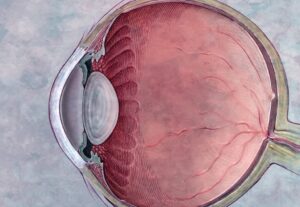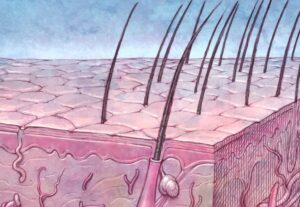More than 100,000 people in the United States are currently waiting for a life-saving organ transplant. Learn more about the different organs and tissues that can be transplanted as well as some of the leading causes that require patients to receive an organ transplant to survive.
Organs for Transplant:
The Heart
The body’s hardest working muscle, the heart beats about 70 times per minute. It pumps blood to provide the body with oxygen and nutrients.
Several types of advanced heart disease can lead to the need for a heart transplant; the most common are coronary artery disease and cardiomyopathy, or weakening of the heart muscle.

There are about 3,500 people in the U.S. waiting for a heart transplant. About one-third of these patients will get a transplant within a year, while about half will wait more than two years. Nearly 600 people die every year waiting for a heart transplant.
More than 3,500 heart transplants happen every year in the U.S. The average wait time for a heart transplant in the U.S. is four months.
Fast Facts:
- Your heart is about the same size as your fist.
- The heart can beat more than 100,000 times a day, pumping about 2,000 gallons of blood throughout a network of vessels in the body.
- A typical heart transplant procedure takes about five hours. Many people who receive a heart transplant are back on their feet within a couple days and are released from the hospital within two weeks.
- A donated heart must be transplanted within about four hours.
The Kidney
The body has two kidneys; however, you can lead a normal life with just one. In adults, each kidney is about five inches long and weighs about a quarter pound.
Kidneys filter waste and blood and balance bodily fluids. They also release hormones that regulate blood pressure, control production of red blood cells and promote the growth of healthy bones. Urine is a by-product of the kidneys blood filtering system.

Common causes of kidney failure include diabetes, high blood pressure and inherited diseases that damage the kidney. People whose kidneys fail will die unless they receive a transplant, or receive dialysis treatments by a machine that filters wastes from blood.
Transplanted kidneys can be donated by either living or deceased donors. Most people receive one transplanted kidney, which surgeons place in front of the lower abdomen by the hipbone. The failed kidney is usually left in place.
More than 85,000 people, including children, are on the national kidney transplant waiting list. The average wait for a kidney transplant in the U.S. is five years.
Fast Facts:
- A kidney from a deceased donor must be transplanted within 24 to 72 hours after being removed from the body.
- Kidneys are the most frequently transplanted organs and make up about 80 percent of all transplanted organs.
- Since 2000, more than 40 percent of all transplanted kidneys are from living donors.
- The first successful kidney transplant took place in 1954 and was between identical twins.
The Liver
Weighing in at about three pounds, the liver is the body’s largest organ. The liver has two lobes – both of which perform the same functions. These functions. include detoxifying the body by breaking down harmful substances in the blood including drugs, poisons and alcohol. The liver produces bile that aids in digestion, and proteins that are important for blood clotting. It is vital to all metabolic processes and breaks down fats.
The main causes of liver failure leading to the need for a transplant are viral infections such as Hepatitis C, genetic disorders and alcoholism. Many liver diseases cause cirrhosis, which is scarring that occurs with inflammation.
Living donation is possible because the liver is the only organ that can regenerate itself. An adult can give a lobe to a child or another adult. The donor’s liver fully regrows within four months and is comparable to the pre-donation liver.

There are more than 10,000 patients waiting for a liver transplant nationally and more than 700 people in Gift of Life’s service region. The average wait time for a liver transplant in the U.S. is 11 months.
Fast Facts:
- At any given moment, the liver holds about one pint of blood which is about 13 percent of the body’s supply.
- More than 8,000 people receive liver transplants every year.
- Liver transplant recipients range in age from infants to people in their 70s.
- A donated liver can remain outside of the body for up to 24 hours before being transplanted.
- The oldest deceased liver donor was a man in his early 90s.
The Lung
Elastic and spongy, lungs are divided into sections called lobes, with three on the right and two on the left. A person in good health can lead a normal life with only about 30 percent of normal lung function.

More than 34 million Americans are living with chronic lung disease. Every year, nearly 342,000 people die of lung disease, making it the third leading cause of death in the U.S.
The primary condition leading to lung transplantation is chronic obstructive pulmonary disease (COPD), which is marked by airflow obstruction, primarily due to emphysema and chronic bronchitis. Other conditions that can cause the need for new lungs are idiopathic fibrosis, cystic fibrosis and primary pulmonary hypertension.
Most lung transplant patients receive one new lung, however those with cystic fibrosis and certain other diseases need two lungs.
Of the more than 1,000 people in the U.S. on the waiting list for lungs, about 25 percent get a transplant each year, but more names are constantly added to the waiting list. The average wait time for a lung transplant in the U.S. is 4 months.
Fast Facts:
- A healthy person at rest breathes 12 to 14 times a minute, while an athlete who is running may breathe 42 times a minute.
- About one-third of patients wait a year or less for lung transplant, while one-third wait one to three years and the remainder three years or more.
- With living lung donation, recipients receive two lobes, one from each of two donors.
- A donated lung can remain outside the body for several hours and most are transplanted within six hours.
The Pancreas
The pancreas produces enzymes to help food digest.

Lack of insulin causes sugar build up in the blood (diabetes), which can lead to kidney failure, heart disease, stroke and circulatory problems and even death. Diabetes can also damage the small blood vessels of the eye, which is the primary cause of blindness in the U.S.
The pancreas is most often transplanted whole along with the kidney in patients suffering from diabetes-induced kidney failure. Experimental transplants of insulin producing islet cells of the pancreas hold hope for future treatments.
More than 800 people in the U.S are waiting for a pancreas transplant and about 2,000 are waiting for kidney-pancreas transplants. The average wait time for a pancreas transplant in the U.S. is 2 years.
Fast Facts:
- About 190 pancreas and more than 800 kidney-pancreas transplants are done in the U.S. each year.
- The U.S. is experiencing an epidemic of type 2 diabetes – where the body makes too little insulin, or the cells ignore the insulin – in adults and children who are overweight and have poor diets.
- The first successful kidney-pancreas transplant happened in 1966, and the first pancreas transplant took place two years later.
- In rare cases, living donors can give part of their pancreas (often along with kidney). Although the pancreas does not regenerate itself, donors rarely have problems due to reduced pancreatic function.
The Intestine
Most digestion of food happens in the small intestine, which is a section of the digestive tract between the stomach and the large intestine. The intestine also fights germs and helps to regulate the body’s water balance.

The most common reason for intestinal transplant is short bowel syndrome resulting from tumors. Other causes include Crohn’s disease, a functional bowel problem, inflammatory bowel diseases, congenital defects and trauma.
Small intestine transplantation can be performed alone or in combination with the liver, pancreas, duodenum or colon. The large intestine is not required to sustain life. It is not transplanted, except for rare circumstances, because the risk of infection is too high.
More than 200 people are now on the waiting list for a new intestine, or for intestines in combination with another organ.
Fast Facts:
- Most patients with intestinal failure can be supported by total parenteral nutrition (TPN), a procedure that provides nutrients directly into the blood stream.
- More than 1,000 intestinal transplants – both alone and with other organs – have been performed since the 1960s.
- Intestine transplants usually involve a deceased donor, although a living donor can donate a partial intestine.
- An intestine transplant can involve the whole intestine or a segment of the intestine.
Tissues for Transplant:
Bone
Bone is a made up of collagen plus minerals that include calcium phosphate and calcium carbonate. This combination gives bone its strength and flexibility.
Traumatic or athletic injuries, diseases like arthritis, and cancerous tumors can destroy bone tissues and joints, causing pain and disability. Both genes and the environment contribute to bone health. External factors, such as diet and physical activity, are critically important to bone health throughout life.

Bone and connective tissues, including ligaments and tendons from the legs, arms and pelvis, are donated for bone grafts used in surgery. Grafts made from donated tissues are essential to spinal and dental surgery, and donated ligaments and tendons are used in knee surgeries.
Donated bone and connective tissues including tendons, ligaments and cartilage are used to treat hundreds of types of procedures to reduce pain, restore mobility and save limbs from amputation.
Fast Facts:
- Nearly 2.2 million bone transplants occur each year worldwide, about 750,000 are in the U.S.
- One bone donor can help 50 or more patients. Donated tissues include the bones, tendons and ligaments of the arms, legs, hip area and ribs.
- Patients who receive bone grafts do not require anti-rejection medications because donated tissues do not induce an immune response.
- The age range for most bone donors is late teens to about age 70.
Cornea

The cornea is the clear dome-shaped cover on the front of the eye. It helps protect the eye from dust, germs and other harmful matter.

The cornea acts like a window that controls and focuses light entering the eye.
Most common vision problems are related to changes in the shape of the cornea. Blurred vision and blindness can happen if the cornea becomes seriously misshapen, scarred or otherwise damaged.
Donated corneas must be processed and placed in preservation solution within 8-12 hours after the donor’s death. To maximize chances for success, the transplant must occur within two weeks.
Fast Facts:
- More than 80 nonprofit eye banks in the U.S. coordinate the distribution of donated corneas for transplant. Because of generous cornea donors, there is no national waiting list of patients needing cornea transplants.
- Generally, infants to people in their 70s can be cornea donors. A history of poor vision does not prevent someone from donating.
- In most cornea donations, only the cornea is removed and not the whole eye. Cornea donors can have open-casket funerals.
- The whole eye is never transplanted, however, with a donor’s family permission, it may be removed for education and research.
Heart Valve
Blood is pumped through the heart’s four chambers aided by four heart valves that open and close to regulate blood flow. This constant flexing causes the sound of a heartbeat.
Damage to heart valves can be caused by degenerative disease, calcification due to aging, coronary artery disease and infections. Also, many children are born with malformed valves.
Heart valves used in transplants can come from mechanical valves, pig hearts and human donors. Patients who receive donated human valves do not require blood-thinning drugs, which are required with mechanical valves.
Fast Facts:
- A damaged heart valve causes the heart to pump harder and can lead to heart failure.
- Thousands of valve transplants are done in the U.S. each year.
- About two-thirds of the people who need new valves each year are less than 15 years old.
- A valve transplanted in a child grows larger as the child grows.
Skin

The average adult is covered by 18-21 square feet of skin, weighing up to 15 pounds.

Skin is the body’s first line of defense against harmful bacteria, fungus and other microbes. Skin also regulates temperature and fluids in the body.
Skin has three layers: The outer layer, called epidermis, provides a protective barrier and creates skin tone; the dermis, which contains strong connective tissue, hair follicles and sweat glands, gives skin its strength and elasticity; and subcutaneous fat, which attaches the dermis to muscles and bones and controls body temperature.
Severe burns or other major injuries to the skin expose the body to infections and fluid loss that can turn fatal. Donated skin can help heal burns. Other conditions treated with skin grafts include cancer lesions, diabetic foot ulcers and genetic blistering diseases. Bacterial infections and adverse reactions to pharmaceutical drugs can also cause life-threatening skin loss.
Fast Facts:
- Like blood, skin is technically an organ because its tissues act together in an organized manner.
- More than 40,000 people in the U.S are admitted to hospitals every year with burns. In serious cases, one burn victim may use more than 10 square-feet of donated skin.
- Donated skin is sometimes used to repair bladder weaknesses, including problems that occur after childbirth.
- A skin donor can have a normal open-casket funeral service.
Veins and Arteries
Arteries carry oxygenated blood from the heart to tissues throughout the body and veins bring deoxygenated blood back to the heart.
Diseases that can harm arteries include atherosclerosis, a disease where plaque — which is made up of fat, cholesterol, calcium and other substances — builds up inside arteries. The accumulation causes narrowing and hardening that can affect the heart and the arteries in the legs. Atherosclerosis is one of the leading causes of death in the U.S.
Saphenous veins, which run from the arch of the foot to the groin, are the most commonly donated blood vessels used for transplants.
Surgeons often use sections of the saphenous veins in coronary artery bypass procedures on the heart and other types of surgery.
Fast Facts:
- A condition called arterial insufficiency, common in people with diabetes, can lead to the amputation of a limb. Using a donated vein, a surgeon can re-establish circulation in an affected limb and save it.
- Donated arteries can help repair certain types of life-threatening aneurysms that occur when part of an artery wall is weakened or damaged causing it to enlarge and bulge out.
- Donated veins and arteries are used in vascular reconstruction that restores blood flow.
- Vein transplants can serve as a conduit for nerve regeneration.
If you have an immediate need, you can call (215) 557-8090.
